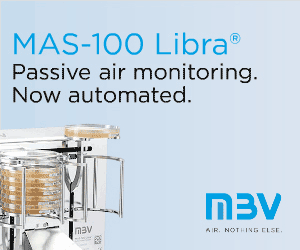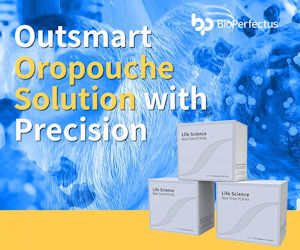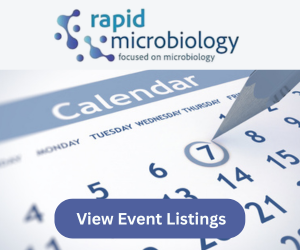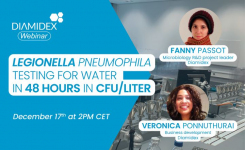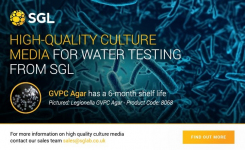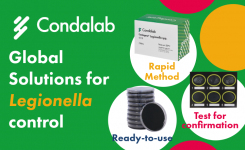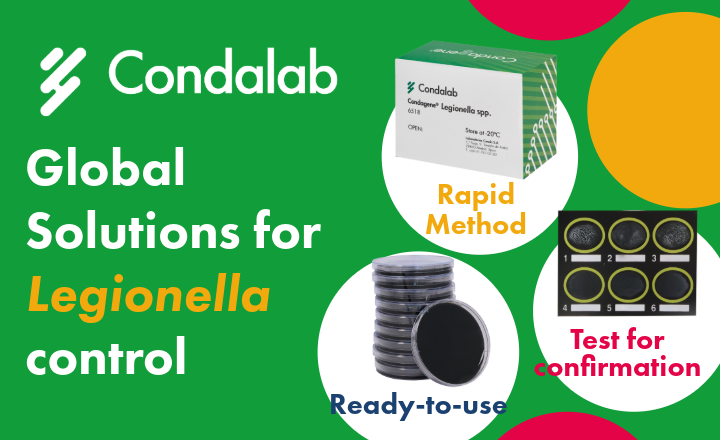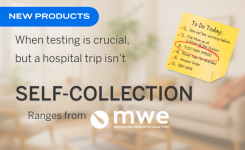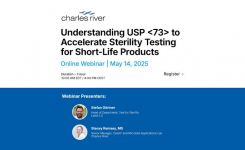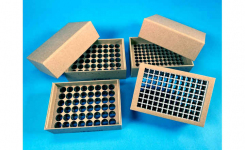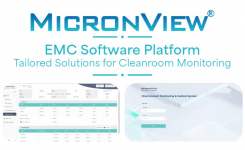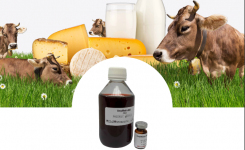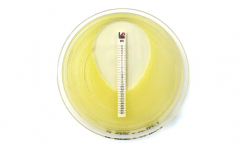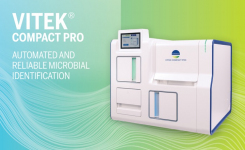
Updated: 26 Aug 2020
Key Points
- Gram -ve, aerobic, non-spore forming rod with motility using polar flagella, optimum growth temp. 36°C and is an intracellular pathogen of macrophages
- Confirmed Legionella infections have risen approx. 100% (EU) and 500% (US) in the last decade (Statistics: ECDC, CDC)
- Legionella reside in water distribution pipes and can live in premise water tanks where temperatures are between 20ºC and 50ºC
- As of October 2019, AFNOR have now NF certified Rapid PCR and colorimetry and fluorimetry methods to ISO standards
Legionella pneumophila infects the lungs and causes a sometimes fatal form of pneumonia. It is the causative organism of Legionnaires Disease and Pontiac Fever. Legionnaires' disease can have symptoms like many other forms of pneumonia: a high fever, chills, and a cough. Some people may also suffer from muscle aches and headaches. These symptoms usually begin 2 to 14 days after being exposed to the bacteria.
Legionella spp. are found in cooling towers, hot and cold water systems, air conditioners, spa equipment, fountains, humidifiers and showers, oil/water emulsions used for lubricating lathes, misting devices, decorative fountains and water features, dentistry tools, TMV's (thermostatic mixing valves). The main mode of transmission is through inhalation of airborne droplets.
Prevention of Legionnaires' disease depends on how well possible sources are maintained, including regular cleaning and disinfection (hyperchlorination) and the application of other physical (temperature - keeping hot water at 60°C and cold below 20°C) or chemical measures (biocide).
There have been reports in several journals of viable but non-culturable [VBNC] Legionella. In some instances, it would appear that these are associated with free-living amoebae - a reported consequence of this is significantly increased resistance to biocides. Particular care must be taken when choosing the optimal test method for evaluating such samples.
Many contract testing companies specialize in Legionella management and testing of water.
Detection Techniques
Legionella is typically isolated from water by filtration followed by heat or acid treatment, then plated onto non-selective BCYE agar, and then with a selective GVPC (cycloheximide) agar. An alternative media, GVPN replaces the potentially hazardous cycloheximide with natamycin. There is also MWY (BCYE with glycine, polymyxin B, anisomycin, and vancomycin), which contains dyes that color the target colonies aiding in their identification. Incubation is for up to 10 days at 36°C.
As an alternative to growth on agar, there are a variety of technologies that may provide rapid results, e.g., antibody/antigen interactions using direct or indirect fluorescent immunoassay methods; molecular methods such as PCR/nucleic acid. Sometimes combinations of these techniques are used to provide faster results. In some situations, these may be the method of choice if VBNC Legionella is suspected in the sample.PCR can eliminate the need for identification in the event of a positive result and may also provide quantitative information.
Rapid Methods: In 2015 the ISO/TS 12869 standard method was established for the detection and quantification of Legionella and/or L. pneumophila by concentration and genic amplification by real-time polymerase chain reaction (qPCR).
In 2019, the Legiolert/Quanti-Tray Legiolert (Colorimetry and fluorimetry) made by IDEXX laboratories was given NF validation for its method in the enumeration of L. pneumophila. This is validated to both NF T90-431 and NF EN ISO 11731( July 2017) Water quality- enumeration of Legionella standard protocols.
The Legiolert Test from IDEXX can detect L. pneumophila at the one-cell level in a100ml sample. It uses a bacterial enzyme detection technology that signals the presence of L. pneumophila through the utilization of a substrate present in the Legiolert reagent. L. pneumophila cells grow rapidly and reproduce using the rich supply of amino acids, vitamins, and other nutrients present in the Legiolert reagent. Actively growing strains use the added substrate to produce a brown colour indicator giving the result within 7 days. This product was tested against standard ISO methods and proved to be more accurate and less likely to give false positives.
Lateral flow Immunochromatographic assays can give a result on Legionella pneumophila SG1 within 25 minutes. A simple filter is attached to the water pipe, and a desired volume of water is run through. If any Legionella is present it will be collected in this filter. The filter is then removed and the user applies a drop from the filter to a lateral flow stick. Wait time of 25-30 mins is compulsory, no more, no less, before visualising reader for a result.
Identification/Confirmation
Traditional methods: Legionella spp. have an absolute growth requirement for L-cysteine, and without this amino acid, they are unable to grow, colonies with typical morphology on selective media are subcultured onto BCYE with L-cysteine and BCYE without it. Those isolates that grow on BCYE with L-cystine but fail to grow on media without it, may be presumptively identified as Legionella spp.
Quicker identification can be carried out using molecular techniques or by direct immunofluorescence. Immunological methods such as latex agglutination allow rapid elimination of negative samples; positives can then be checked out with more targeted tests.
Confirmatory tests typically include molecular techniques e.g PCR.
Summary of AFNOR certification:
Colorimetry and fluorimetry: The IDEXX laboratories- Legiolert/Quanti-Tray Legiolert now have NF validation; the aim of this method is for the enumeration of L. pneumophila (August 5th, 2019).
The reference methods are NF T90-431 (August 2017) and NF EN ISO 11731( July 2017) Water quality- enumeration of Legionella.
PCR methods
a) Bio-Rad- iQ-Check Legionella spp. - For the detection and quantification of Legionella.
b) Pall Gene disc - for the detection and quantification of Legionella.
Reference methods: NF T90-471 (June 2015) Water quality -detection and quantification of Legionella and/or L. pneumophila by concentration and genic amplification by real-time polymerase chain reaction (qPCR) & Iso /TS 128 69 same definition
Get the latest updates in Rapid Microbiological Test Methods sent to your email? Subscribe to the free rapidmicrobiology eNewsletter


